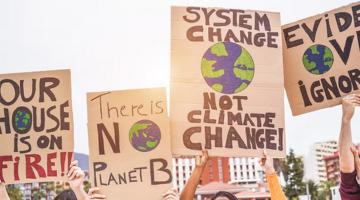One of the poorest towns in the nation, nearly all-Black Centreville, Illinois, floods with raw sewage every time it rains.
“It’s like Mississippi in the 1930s.”
South of East St. Louis, down in the broad flood plain of the Mississippi known as the American Bottom, there is a little town that is gradually sinking in a flood of human waste. There is just no other way to say it, no other way to begin to tell the story of Centreville, Illinois. If you drove through quickly and did not look very carefully, it might look like any other rural town in this part of the Midwest. Gravel roads lined by storm-torn trees, large lots, small one-story houses, bread-box shaped mailboxes with small red flags out at the ends of driveways. But there are signs of the floods everywhere: abandoned houses surrounded by swampy yards, drainage ditches filled with brackish water, little wads of toilet paper hanging waist-high from the bushes by the side of the road.
Even a moderate rain can flood the intersections and lowlands of Centreville. When it rains heavily, much of the town is submerged in two or three feet of water. Water wears away at the foundations of homes and shorts out furnaces and hot water heaters. Outside some of the houses in Centreville, you can see three or four generations of ruined appliances lined up in a row. A resident I met last year told me that he had spent most of the winter living in the back room of his house with a space heater running around the clock. Without a functioning furnace or hot water heater, he had turned off the water to the house so the pipes did not freeze, drinking, cooking, and even bathing with bottled water.
“Little wads of toilet paper hanging waist-high from the bushes by the side of the road.”
Almost all of the water that surrounds the houses and floods the roads is dangerously contaminated. The sewer system in Centreville works as poorly as the storm drains. Each resident’s yard has a sewer cleanout so sluggish pipes can be cleared with a drain snake—but many of them run backward. Small fountains of raw sewage bubble up into the yards twenty-four hours a day, flowing into fetid sluiceways that run between the houses. Some days, especially in the summer, the whole town smells like an outhouse. And when it rains, and the water begins to rise, the sewage follows the water, out into the drainage ditches and the roadways, across the yards, into the houses. Many of the houses in Centreville, even the best-maintained houses, bow in the middle, where the foundations are gradually sinking into swampy ground.
It is easy to recognize in Centreville, which is 97 percent black, an outline of the African American past: segregation, rurality, poverty.More than one time I have heard visitors say, “It’s like Mississippi in the 1930s.” And there is something true and revealing about the comparison. But more even than the past, Centreville looks like the future—a future unfolding at the confluence of climate catastrophe, structural racism, infrastructural deterioration, and widespread indifference to black suffering.
Centreville, incorporated in 1957, lies just south of East St. Louis. To the east along the river is Sauget, Illinois—formerly Monsanto, Illinois—where the eponymous (and notorious) chemical company got its start producing, among other things, toxic PCBs. There are still chemical plants in Sauget today, although not much else—some small neighborhoods, and several mostly abandoned roadside malls along Illinois State Highway 3, where the truckers who come and go from the plants keep a couple of greasy spoon diners and several weather-beaten strip clubs in business. Centreville itself is shaped like a horseshoe. The two sides bracket the city of Alorton, the one-time home of the largest aluminum ore processing plant in the United States (Al-or-ton). The cynical deployment of black strikebreakers against the unrepentantly segregated AFL union in the Alorton plant was one of the causes of the 1917 East St. Louis massacre: a mob of thousands of whites killed hundreds of their black neighbors on July 2 that year. They burned thousands of buildings, permanently driving as many as 5,000 African Americans—men, women, and children—across the river to St. Louis.
“Centreville is an outline of the African American past: segregation, rurality, poverty.”
Both work and wealth in East St. Louis were mostly controlled by whites through World War II (indeed, the city was briefly governed by the Ku Klux Klan), and Centreville was developed as a small, rural, white residential enclave in the midst of surrounding industry. The city was laid out and built on low-lying land at the far margin of the Mississippi flood plain, bounded on the east by high bluffs and the city of Belleville. By 1960 the city had completed the network of ditches necessary to keep the area dry, and the sewer system had been tied into the pipes that served East St. Louis. Weirdly, incongruously, surreally, there remain today several geodesic houses at the edge of Centreville—architectural studies for Buckminster Fuller’s visionary 1971 plan to rehouse the entire population of East St. Louis in a gigantic thousand-foot dome that would have accommodated as many as 125,000 people.
By that time, East St. Louis, like virtually every other city in the industrial Midwest, was losing both its industrial base and its white population. By the 1980s, the city had become a byword for black poverty and urban decay. Like many of the surrounding municipalities in what has come to be called Metro East, the city of East St. Louis had always served as more of a legal shell for corporate privilege—low taxes, nonexistent regulation, minimal public services—than a fully functioning city. By the late 1980s, the city’s sewer system was failing, and the city government was being sued by the EPA for misusing federal funds that had been earmarked for its repair.
In these same years, Centreville became a majority- and then an almost entirely black town. Many of the new residents were first-generation homeowners who moved to Centreville to escape deteriorating conditions elsewhere in the Metro East region. The town was one of the few suburbs in the St. Louis metro area into which working-class blacks of moderate means could move during the 1960s and even into the ’70s and ’80s. Quite a few moved from homes that were slated for destruction in advance of the construction of Interstate 55 through East St. Louis. To this day, residents talk about the sense of safety and solitude they felt when they moved into their new houses—no gangs, no guns, no police, no problems.
“Many of the new residents were first-generation homeowners.”
Until the water began to rise. Many of those who moved to Centreville put their life savings into homes that were worth fifteen or twenty thousand dollars when they bought them; their homes are now worth literally ten cents on the dollar of what they paid decades ago. One resident, Vittorio Blaylock, has paid thousands of dollars to have hundreds of thousands of cubic feet of dirt spread over his lot in a futile effort to raise it out of the municipal flood plain; another, Cornelius Bennett, showed me a sheaf of receipts from a plumbing company that, after repeatedly cleaning out the pipes running under his yard, finally told him they would not take any more of his money.
The residents of Centreville are not wealthy—quite the opposite. The median family income in town is among the lowest of any municipality in the United States, just over $17,000 a year. Many of those who could afford to leave have done so, but a tight-knit remnant hangs on; more than a quarter are elderly. They support one another through the floods. Longtime resident Walter Byrd keeps a flatboat in his yard that he uses to ferry his neighbors when the water gets high. Recently, the residents have begun to organize themselves to take on the shadowy constellation of private interests, semipublic agencies, and municipal authorities that oversee their water and waste—each of which seems to believe the solution to the problem lies anywhere but within the boundaries of their authority. “We have lived here forty-two years,” Hazel Leflore told me, “I can’t even tell you the amount of times we’ve called.” “After the white folks moved, they stopped doing stuff out here,” adds her neighbor Michael McNeal.
Some date the beginning of the problem to the 1986 completion of Interstate 255, which looped traffic around the southern edge of the Metro East region, and was eventually (in 2002) declared by the Army Corps of Engineers to be impeding the flow of water from Centreville into the Harding Ditch, the drainage canal designed to collect surface water from the American Bottom and carry it to the Mississippi. The situation has only deteriorated in the meantime.
“After the white folks moved, they stopped doing stuff out here.”
Water and sewer service in Centreville and several of the surrounding municipalities is (and has been since the 1970s) provided by Commonfields of Cahokia, a nonprofit public utility. It is hard to find out much about Commonfields, which does not maintain a website, but what information is publicly available is not reassuring. In a 2012 federal court case, Commonfields general manager, Dennis Traiteur, Sr., testified in court that “everyone” at Commonfields was “hired for political reasons.” The practice apparently extended to his own son, Dennis Traiteur, Jr., who was hired by Commonfields in 2009 as assistant superintendent, though he was found by the court to have “no experience with wastewater or supervisory skills.” Public watchdogs have documented a litany of other abuses at Commonfields, including the failure to make board meeting accessible to the public and threatening to sue members of the public who attend the meetings.
The poor condition of the water and waste infrastructure is obvious to anyone who cares to look—or who rolls down the window of their car and smells the air on a hot summer day. Roadside drainage ditches, which need to be pitched at a slight angle in order to carry stormwater toward the river, are silted up, and serve instead as small ponds—some are full of algae, some appear to be thickening into tiny enclosed roadside meadows. Many of the huge emergency pumps that are scattered throughout the township show no signs of having functioned for years: their machinery is covered with dust and cobwebs, and water pools around their bases when it rains. In 2009 the Illinois state EPA declared that the Harding Ditch, which drains the American Bottom, contained hazardous levels of fecal coliform. It has become, effectively, an open sewer.
The most recent Centreville flood occurred on January 11, 2020. As it has been dozens of times—perhaps as many as a hundred times—since she has been living in Centreville, Patricia Greenwood’s house was surrounded by water. Greenwood grew up in Centreville, where she moved with her parents in the early 1960s, when I-55 was built through the neighborhood where they lived in East St. Louis. She remembers the early years nostalgically, a beautiful little house surrounded by beautiful trees. Her house is on Piat Place, and in those days the neighborhood was referred to as Piat Orchard.
“Harding Ditch has become, effectively, an open sewer.”
As early as the 1980s, she remembers, there were problems with water. She remembers her father borrowing a backhoe from the plant where he worked in East St. Louis to try to dig out the area behind the house so that the water would drain better. But the flooding is much worse today, she says, “much, much much, as many time as you can say much.” The house on Piat is gradually falling down around Greenwood, her husband, Lonnie, and their fifteen-year-old son, Arthur. Five years ago, she walked into one of the rooms in the front of the house to find that the floor had collapsed. Her father and husband went under the house and rebuilt the floor and its supports, but when she walked into the same room not long after, she had the uncanny sense that the walls did not look straight. She walked over and looked down, only to find that the floor of the house was pulling away from the wall. She could see through the crack between the wall and the floor into the muddy swamp below. The house on Piat was gradually shifting off of its foundation.
The same thing is happening to the house next door, where the Greenwoods’ neighbor Earlie Fuse has rebuilt the washed-out foundation of his home five times, only to see it again undermined by the repeated floods. The Greenwoods worry about Mr. Fuse, but also about where his house will go if it actually breaks free or falls in: Will it take theirs down, too?
The repeated floods have left behind a residue of black mold that comes up through the floor of the Greenwoods’ house. It rots away the windowsills, tints the glass yellow, and stains the curtains as it crawls up the walls. Mrs. Greenwood washes the curtains with Clorox, but the mold comes back again and again. She’s gone to the Red Cross office in nearby Belleville, and brought home flood cleanup kits. They work for a couple of weeks, and then the smell comes back.
Mrs. Greenwood, like many of the residents of Centreville, speaks of “the smell” as a force of nature—as something both unpredictable and uncontrollable. It is the smell of raw sewage. It was what drew her into the front room the morning that she discovered that the floor had collapsed, and what keeps her from inviting her family and friends to the house in the way that she once did, for parties and barbecues, before the smell became so frequent and noxious that it stopped seeming as if celebrating or entertaining might be fun. Last April her bathroom backed up—sewage coming out of toilet, sink, and shower—and would not clear. Mr. Greenwood, who was recovering from quintuple bypass surgery, nevertheless cut a hole in the floor of the bathroom and tried to dig down under the house in a futile effort to clear the area around the inundated sewer pipes. Today, the hole in the bathroom floor is covered with a piece of plywood, and there is a constant backwash of sewer water in their shower.
“The mold comes back again and again.”
The disaster response bureaucracy of the state of Illinois considers the events in Centreville to be a more-or-less random series of flash floods rather than a slow-rolling disaster worthy of state intervention. To fit the official understanding of “disaster,” apparently, the damage must be caused by a single, discrete event, rather than being spread across wearying years. In 1993, when the Mississippi River flooded the American Bottom, the mayor of Centreville walked down Piat Place to inspect the damage. When he stopped at the Greenwoods, he remarked on the smell and then moved on. Mrs. Greenwood does not remember anyone from the city or county—or from Commonfields of Cahokia—being on the street since then, although at some point in the past year a candidate for local office stopped by her next-door neighbor’s house to assure him they were going to do something about the flooding. With a Sharpie, the candidate sketched on a piece of printer paper a diagram of how the problem would be fixed, leaving the drawing along with a glossy brochure.
The Greenwoods all have respiratory problems and constant headaches, and Mrs. Greenwood worries constantly about Arthur. The family lives on a fixed income, and have spent much of what they had on a succession of replacement furnace, hot water heaters, refrigerators, washers, and dryers to replace those ruined by water. “I can’t count how many,” Mrs. Greenwood says. So far, they been able to keep the house and garage patched together enough to keep the roof over their heads, if not much more.
I have spoken with almost a dozen people in Centreville whose stories are, in broad outline, the same as Mrs. Greenwood’s. They are, to a person, polite in an old-fashioned, country kind of way. They refer to one another as Mr. Byrd and Mrs. Greenwood, and will not say anything more about the smell than that it smells really bad—they are too polite to name the odor that haunts their lives, as if they are worried that visitors might be offended by the words. They stop to talk when they are driving along the road and see one of their neighbors out in the yard. They look out for one another. Recently, they have begun to work with some public interest lawyers—a couple of young black women, Nicole Nelson from nearby O’Fallon, Illinois, and Kalila Jackson from St. Louis, who have assembled a larger team of environmentalists, scientists, and student activists in order to try to sort the flood tide of history into an accounting of legal liability and moral responsibility.
“Recently, they have begun to work with some public interest lawyers.”
Asked where she thinks the water and the waste come from, Mrs. Greenwood answers that it comes “from the people above us”—the people who live on the higher ground that surrounds Centreville: the more prosperous suburbs of Belleville, O’Fallon, and Collinsville. In Centreville, the flow of social power, storm water, and even human waste all follow the same course. Poor and working-class black people from the 1960s on found their way to a place where they thought they could get a foothold in the middle class, only to see their dreams washed away by a tide of malfeasance and indifference. Highways planned without regard to their homes; bureaucratic definitions of disaster which define their chronic flooding, suffering, and sickness as acceptable; local “representatives” whose only resource for dealing with the longstanding problems of structural racism, infrastructural deterioration, and environmental catastrophe appears to be boundless cynicism.
And yet, as tired as they are of hoping that something will change, that someone will care, the residents of Centreville are once again telling their stories. “Bring us back some help,” Mrs. Greenwood told me when I last said goodbye to her, standing in her front yard, “tell them we’re still here.”
Walter Johnson is Winthrop Professor of History and Professor of African and African American Studies at Harvard University, where he is also director of the Charles Warren Center for Studies in American History. He is the author of The Broken Heart of America: St. Louis and the Violent History of the United States and River of Dark Dreams: Slavery and Empire in the Cotton Kingdom.
This article previously appeared in Boston Review.
COMMENTS?
Please join the conversation on Black Agenda Report's Facebook page at http://facebook.com/blackagendareport
Or, you can comment by emailing us at comments@blackagendareport.com

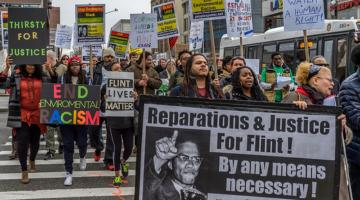


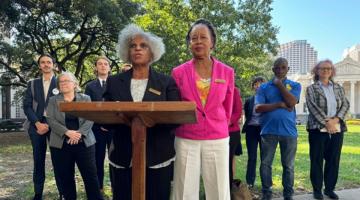
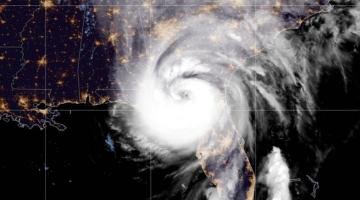

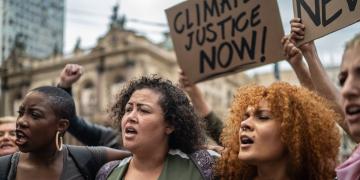
![How Joe Biden and The Democratic Party’s Climate Agenda Increases Environmental Racism More Than It Reduces Emissions [A Three Part Series]](/sites/default/files/styles/nc_thumb/public/2023-09/cancer%20alley%20protest.jpg.jpeg?itok=kOK48inx)






